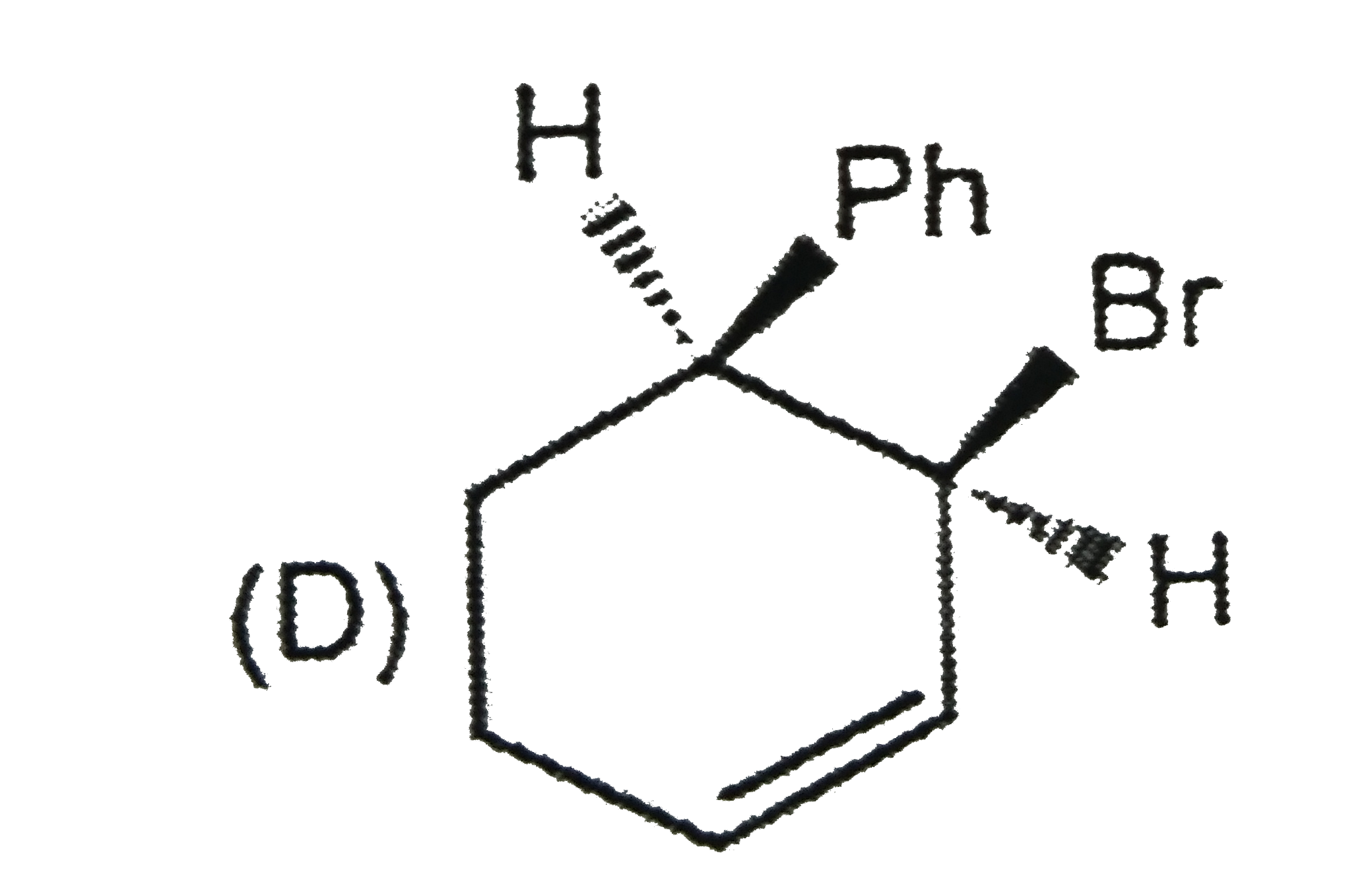The elimination reactions mainly involve three mechanism E1,E2 and E1cB. If the leaving group departs before β-proton (HΘ ion) then it is E1 mechanism. If proton is taken off first before leaving group it is E1cB mechanism.The pure E2 involves both β-Hydrogen and leaving group departing simutaneously. If acidity of β-Hydrogen increases and leaving group ability decreases then E1cB mechanism increases.

Product P is




The correct Answer is:C
Topper's Solved these Questions
- ORGANIC REACTION MECHANISMS-IVBook:RESONANCE ENGLISHChapter:ORGANIC REACTION MECHANISMS-IVExercise:APSP PART-2
Explore 17 Videos
- ORGANIC REACTION MECHANISMS - IIBook:RESONANCE ENGLISHChapter:ORGANIC REACTION MECHANISMS - IIExercise:APSP Part - 3
Explore 22 Videos
- PERIODIC TABLE & PERIODICITYBook:RESONANCE ENGLISHChapter:PERIODIC TABLE & PERIODICITYExercise:ORGANIC CHEMISTRY(BASIC CONCEPTS)
Explore 27 Videos
Similar Questions
The elimination reactions mainly involve three mechanism E1,E2 and E1cB. If the leaving group departs before β-proton (HΘ ion) then it is E1 mechanism. If proton is taken off first before leaving group it is E1cB mechanism.The pure E2 involves both β-Hydrogen and leaving group departing simutaneously. If acidity of β-Hydrogen increases and leaving group ability decreases then E1cB mechanism increases.

The alkene formed as a major product in the above elimination reaction is
View SolutionThe elimination reactions mainly involve three mechanism E1,E2 and E1cB. If the leaving group departs before β-proton (Ht=Θ ion) then it is E1 mechanism. If proton is taken off first before leaving group it is E1cB mechanism.The pure E2 involves both β-Hydrogen and leaving group departing simutaneously. If acidity of β-Hydrogen increases and leaving group ability decreases then E1cB mechanism increases.
Which of the following substrate will undergo fastest reaction through E1cB route
View SolutionWhat do you understand by elimination reactions ? Discuss the mechanism of E1 and E2 reactions.
View SolutionIf the mechanism is E1cB then the possible products will be :

View SolutionWhat are the essential conditions for any reaction to show E1cB mechanism ?
View SolutionIf ethanol containing EtOD is used as solvent , then deuterium exchange take place in E1cB mechanism . Why ?
View SolutionWhat is meant by E1andE2 reactions ? Discuss the two mechanisms by taking suitable examples.
View SolutionThe acidic character of alcohols is due the polar nature of O-H bond. An e releasing group (−CH3−C2H5) increases e density on oxygen thus decreasing the acidity while e withdrawing group increases the acidity.
Which is the strongest acid among:
View SolutionNucleophilic substitution reactions generally expressed as
Nu−+R−L→R−Nu+L−
Where Nu−→ Nucleophile , R−L→ substrate, L→ leaving group
The best leaving groups are those that become the most stable ions after they depart. since most leaving group leave as a negatibe ion, the best leaving groups are those ions that stabilize a negative charge most effectively. A good leaving group should be
(a) electron-withdrawing to polarize the carbon
(b) stable once it has left (not a strong base)
(c) polaristable to maintain partial bonding with the carbon in the transition state (both SN1 and SN2). This bonding helps to stabilise the transition state and reduces the activation energy.
(I) CI− (II) CH3O− (III) CH3S− (IV) I−
The correct order of increasing leaving group capability of above anions
View SolutionNucleophilic substitution reactions generally expressed as
Nu−+R−L→R−Nu+L−
Where Nu−→ Nucleophile , R−L→ substrate, L→ leaving group
The best leaving groups are those that become the most stable ions after they depart. since most leaving group leave as a negatibe ion, the best leaving groups are those ions that stabilize a negative charge most effectively. A good leaving group should be
(a) electron-withdrawing to polarize the carbon
(b) stable once it has left (not a strong base)
(c) polaristable to maintain partial bonding with the carbon in the transition state (both SN1 and SN2). This bonding helps to stabilise the transition state and reduces the activation energy.
Among the following which is feasible?
View Solution


